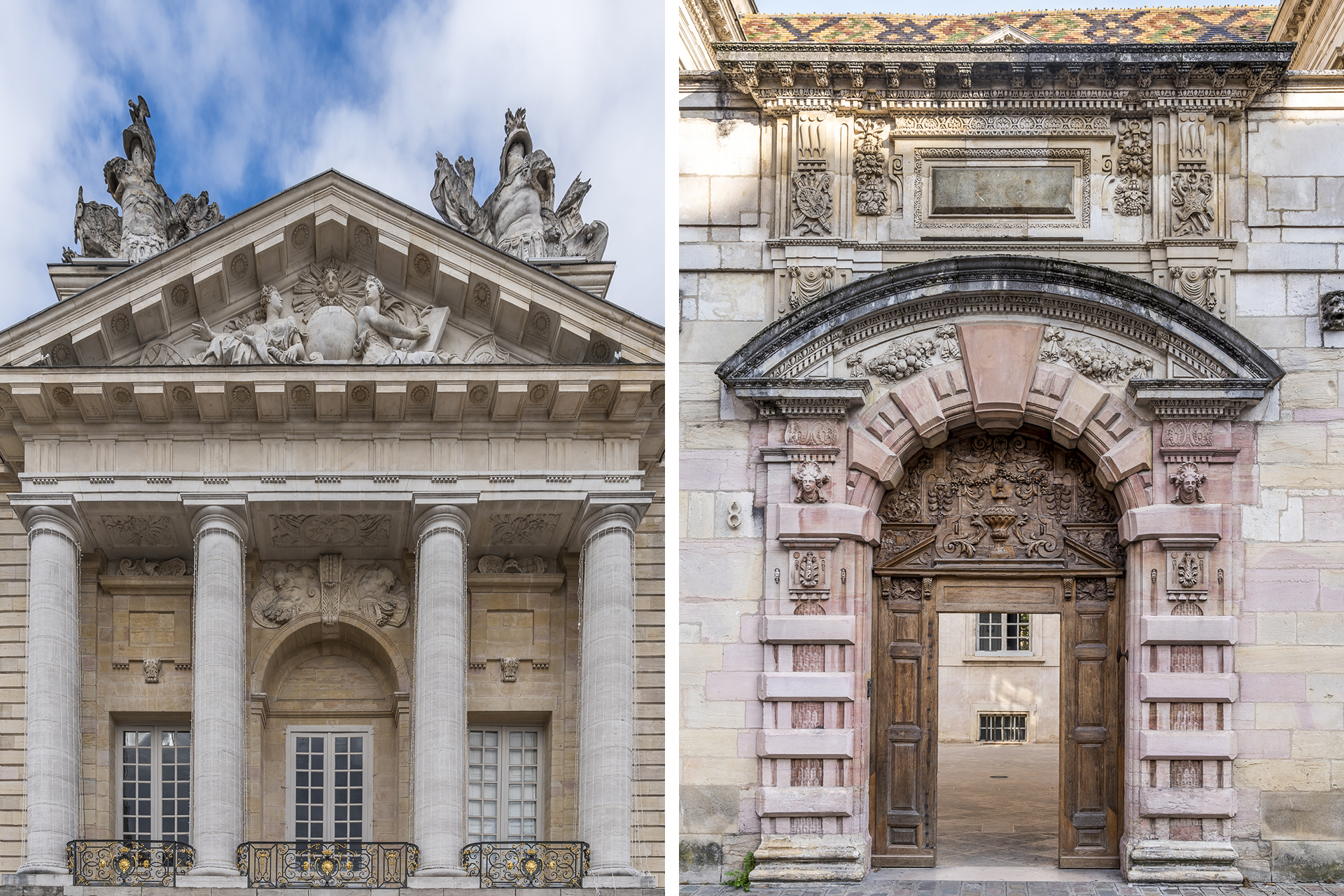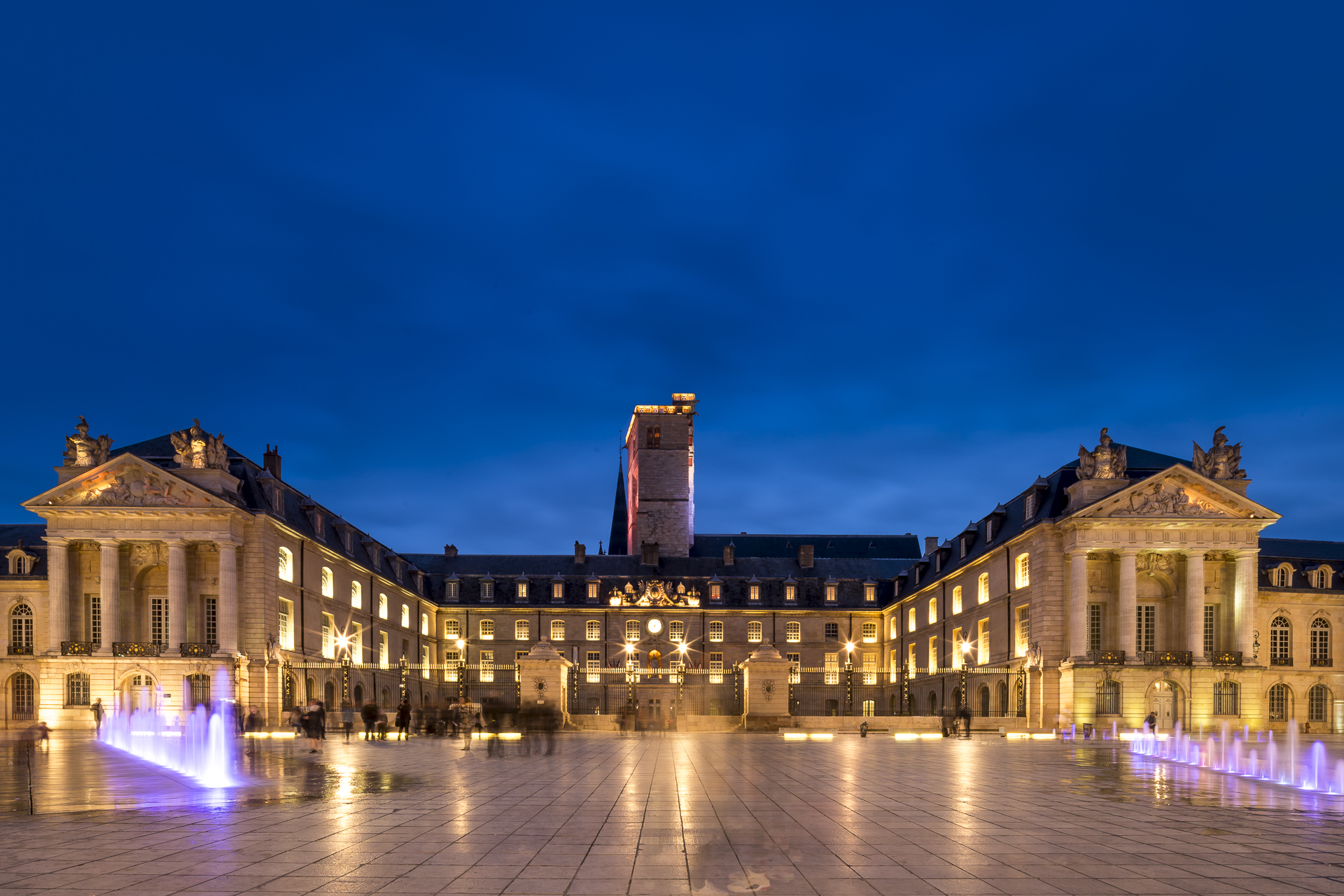
9 tips and sights for your weekend trip to Dijon
I am a self-confessed fan of short trips to European cities and like to pick out destinations that can be reached by train from Switzerland. In recent years, we have explored Lyon, Milan, Bologna, Turin and Bergamo, among others, and this year we chose Dijon. The city in the heart of Burgundy is less than a 1.5-hour TGV ride from Basel and is a worthwhile destination for a weekend trip with its historic centre and numerous excellent restaurants.
Header text
#1 Start the day relaxed
Dijon is a comparatively compact city and the sights are close together. A time budget of two days is enough to explore the highlights of Dijon without the hustle and bustle. Sleeping in is just as much a part of it as a leisurely breakfast or coffee stop before the actual city tour. Our favourite discovery when it comes to good coffee is JSB Coffee, located on Rue Musette. We would also have liked to try the Morning Glory Café on Rue des Godrans, which has been praised in various places. Unfortunately, this was closed during our stay.

#2 visit the market hall
One of the main attractions of Dijon is the historic market hall “Les Halles”, which we take a look at directly after our invigorating morning coffee. It’s worth stopping by here in the morning, because it’s much less busy in the afternoon. But now – shortly after ten o’clock on a Saturday morning – the displays are filled to the brim with fresh vegetables, regional cheeses and meat specialties. Luckily, I ordered a piece of apple pie with my coffee beforehand, otherwise my stomach would growl loudly.


#3 follow the owl and find the sights in Dijon
If you walk through Dijon, sooner or later you will discover an owl on the cobblestones. The “Parcours de la Chouette” (Tour of the Owl) leads in 22 stations across the old town, which was awarded UNESCO World Heritage status in 2015 together with the adjacent wine-growing region. You can get the information about this at the tourist office (cost 3.50 euros). But even without further explanations, the owl guides us to all the important sights of the old town.

We walk from the market hall to the striking Notre-Dame, at the back of which – on the Rue de la Chouette – there is a stone owl. Supposedly, it brings good luck if you touch the owl with your left hand.
Before visiting the beautifully designed Place de la Libération in front of the imposing town hall, we make a detour to Rue Verrerie. With its numerous half-timbered façades, Rue Verrerie is one of the most beautiful alleys in Dijon for me. In addition, various concept stores, galleries and design shops have settled here.




It seems remarkable to me that a large part of the old town is kept car-free. Strolling and exploring the numerous pretty alleys is twice as much fun.



#4 Taste regional specialties
Something that immediately comes to mind when I hear the term “Dijon” is the spicy Dijon mustard, which is a must in my kitchen. While I’m in mustard town, I want to stock up on mustard with a local product. For this, it is worth taking a detour to the Moutarderie Edmond Fallot on the Rue de la Chouette.

Other specialities of the region include the spiced bread “Pain d’épices”, cassis and, of course, the fine Burgundy wines. You can find the spiced bread in the delicatessen of Mulot & Petitjean, among others. The wine can be tasted in various wine bars, wine shops and restaurants.
In most of the better restaurants, it is worth making a reservation in advance. Unfortunately, very few establishments have a simple online reservation system and only accept reservations by telephone. We therefore did not make a reservation for Saturday lunchtime in advance and were lucky enough to get the last free table in the Dz’envies. The restaurant, which has been awarded a Bib Gourmand, serves modern interpretations of Burgundian cuisine with matching wines. I ate a fine mushroom risotto here and then a spiced bread panna cotta.

Val alternatives to the Dz’envies are the wine bar Dr. Wine (5 Rue Musette – online reservation possible), the Maison des Cariatides (28 Rue Chaudronnerie) and for vegetarians the Treize Lucioles (13 Place Émile Zola).
#5 immerse yourself in the history of Burgundy
Located in the former ducal palace, the Musée des Beaux-Arts offers an exciting insight into Burgundian art of the late Middle Ages. Due to ongoing renovations, only an excerpt of the actual collection was accessible during our visit. But since admission is free, the detour to the museum is definitely worth it.

Before or after the museum visit, I can recommend a coffee stop in the beautifully bright Brasserie des Beaux-Arts right next door.

A museum dedicated to all facets of Burgundy is the Musée de la Vie Bourguignonne. Admission is also free of charge. In my opinion, the didactic structure of the museum has room for improvement. But the location is beautiful. The museum is located in the cloister of the Monastère des Bernardines monastery.

A museum that has nothing to do with the history of Dijon, but I really wanted to visit, was the “Consortium” center for contemporary art. Unfortunately it had closed during our stay. The new exhibition starts on November 23rd – if you are interested in contemporary art, then the Consortium should not be missing from your Dijon sightseeing list.
#6 Admire the sights of Dijon from above
The most beautiful view over Dijon is offered by the Tour Philippe le Bon. Important to know: The tower is only accessible at certain times with a guided tour. Since the respective time slots are quickly booked up, it is worthwhile to reserve the ticket online in advance on the official website of Dijon Tourism.
The cost for this is 5 euros (full price (as of 2023). We were lucky in that although the tourist office (where you can get the tickets as an alternative to online reservation) said that all dates for the weekend were fully booked, we still managed to get two places online. Why exactly the tourist office proactively notes all places as fully booked remains a mystery to us. On the other hand, we now know that this tour (time required about 45 minutes) is worth it in any case! It would be a shame if we had been deprived of this panoramic view over Dijon.




#7 Blue Hour am Place de la Libération
Kurz vor dem Eindunkeln unternehmen wir einen weiteren Bummel durch die Altstadt mit Ziel Place de la Libération. Das Herzstück von Dijon entfaltet seine volle Schönheit während der Blue Hour. Bestellt euch doch ein Apéro und beobachtet das Treiben von einem der Restaurants am Rande des halbkreisförmigen Platzes.

#8 hemmungslos schlemmen
Der Spaziergang zum Place de la Libération inklusive Apéro ist die perfekte Einstimmung auf einen genussreichen Abend. In Dijon sind aktuell drei Restaurants mit einem Michelin-Stern und ein Restaurant mit zwei Michelin-Sternen ausgezeichnet. Zwei davon haben wir während unserem Aufenthalt ausprobiert.
Im Restaurant Stéphane Derbord (1 Michelin Stern) haben wir uns durchs Menu Harmonie (105 Euro) mit passenden Weinen aus dem Burgund probiert. Ich war ab der Anzahl Gänge überrascht, wie üppig teilweise die Portionen ausfallen. Mit Ausnahme des Desserts haben uns alle Gänge überzeugt, wobei das Highlight der wohlsortierte Käsewagen war. Am Mittag wird hier übrigens ein dreigängiges Überraschungsmenu für 30 Euro serviert.

Die 105 Euro fürs Signature Menu von Stéphane Derbord sind im Vergleich zu den 150 Euro fürs Signature Menu vom 2-Sterne-Koch William Frachot fast ein Schnäppchen. In beiden Restaurants besteht aber auch die Möglichkeit, à-la-Carte zu bestellen.
Optisch und geschmacklich konnte mich das Menu von William Frachot mehr begeistern. Spannend fand ich, dass sich die Verwendung des Dijon Senfs wie ein roter Faden durchs Menu zieht. Weniger überzeugt hat uns die Bedienung. Teilweise wurden Gerichte dem falschen Tisch zugewiesen oder kommentarlos abgestellt – auf diesem Niveau definitiv verbesserungswürdig.

#9 zentral logieren
Übernachtet haben wir im Chapeau Rouge (Partnerlink), das gleichzeitig das Sternerestaurant von William Frachot beherbergt. Das 4-Sterne Boutique Hotel bietet 28 Zimmer an bester Lage zwischen Bahnhof und Altstadt. Wir haben von hier aus alles zu Fuss erkundet. Die Zimmer sind nicht riesig, aber als Basis für eine Städtereise meiner Ansicht nach völlig ausreichend. Wir haben pro Nacht für ein Superior Zimmer 150 Euro bezahlt. Das Frühstück haben wir nicht dazu gebucht. Was wir uns ebenfalls nicht angeguckt haben, ist der SPA-Bereich des Hotels mit Sauna und Dampfbad – dieser wäre für Hotelgäste auf Voranmeldung kostenfrei nutzbar.

Extratipp für deine Reise nach Dijon
Die schnellste Verbindung von Zürich und Basel nach Dijon bietet der TGV. Die TGV Tickets sind in der Regel ab vier Monate vor dem geplanten Reisedatum buchbar – und es lohnt sich, diese so früh wie möglich zu kaufen. Ich habe mir bezüglich des Tickets im Vorfeld keine grossen Gedanken gemacht und dann relativ spontan – zwei Tage vor der Abreise – die Fahrkarten organisiert. Kostenpunkt: 150 CHF pro Person für Basel-Dijon retour. Wenn ihr frühzeitig bucht, dann erwischt ihr mit Glück Tickets, die weniger als 100 CHF kosten. Am besten konsultiert ihr hierfür die TGV Lyria Seite.
Übrigens, eine Städtereise nach Dijon lässt sich gut mit einem Abstecher in die nah gelegene Wein- und Kunststadt Beaune kombinieren.





Leave a Reply